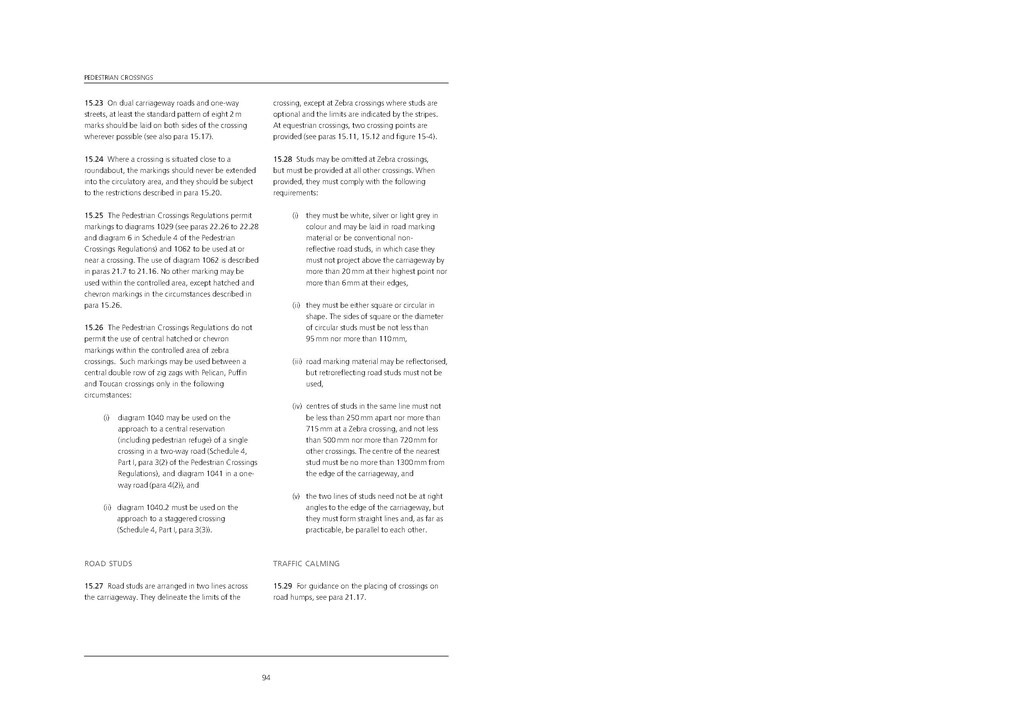15.23 On dual carriageway roads and one-way streets, at least the standard pattern of eight 2 m marks should be laid on both sides of the crossing wherever possible (see also para 15.17).
15.24 Where a crossing is situated close to a roundabout, the markings should never be extended into the circulatory area, and they should be subject to the restrictions described in para 15.20.
15.25 The Pedestrian Crossings Regulations permit markings to diagrams 1029 (see paras 22.26 to 22.28 and diagram 6 in Schedule 4 of the Pedestrian Crossings Regulations) and 1062 to be used at or near a crossing. The use of diagram 1062 is described in paras 21.7 to 21.16. No other marking may be used within the controlled area, except hatched and chevron markings in the circumstances described in para 15.26.
15.26 The Pedestrian Crossings Regulations do not permit the use of central hatched or chevron markings within the controlled area of zebra crossings. Such markings may be used between a central double row of zig zags with Pelican, Puffin and Toucan crossings only in the following circumstances:
(i) diagram 1040 may be used on the approach to a central reservation (including pedestrian refuge) of a single crossing in a two-way road (Schedule 4, Part I, para 3(2) of the Pedestrian Crossings Regulations), and diagram 1041 in a oneway road (para 4(2)), and
(ii) diagram 1040.2 must be used on the approach to a staggered crossing (Schedule 4, Part I, para 3(3)).
ROAD STUDS
15.27 Road studs are arranged in two lines across the carriageway. They delineate the limits of the crossing, except at Zebra crossings where studs are optional and the limits are indicated by the stripes. At equestrian crossings, two crossing points are provided (see paras 15.11, 15.12 and figure 15-4).
15.28 Studs may be omitted at Zebra crossings, but must be provided at all other crossings. When provided, they must comply with the following requirements:
(i) they must be white, silver or light grey in colour and may be laid in road marking material or be conventional non reflective road studs, in which case they must not project above the carriageway by more than 20 mm at their highest point nor more than 6 mm at their edges,
(ii) they must be either square or circular in shape. The sides of square or the diameter of circular studs must be not less than 95 mm nor more than 110 mm,
(iii) road marking material may be reflectorised, but retroreflecting road studs must not be used,
(iv) centres of studs in the same line must not be less than 250 mm apart nor more than 715 mm at a Zebra crossing, and not less than 500 mm nor more than 720 mm for other crossings. The centre of the nearest stud must be no more than 1300 mm from the edge of the carriageway, and
(v) the two lines of studs need not be at right angles to the edge of the carriageway, but they must form straight lines and, as far as practicable, be parallel to each other.
TRAFFIC CALMING
15.29 For guidance on the placing of crossings on road humps, see para 21.17.
94
